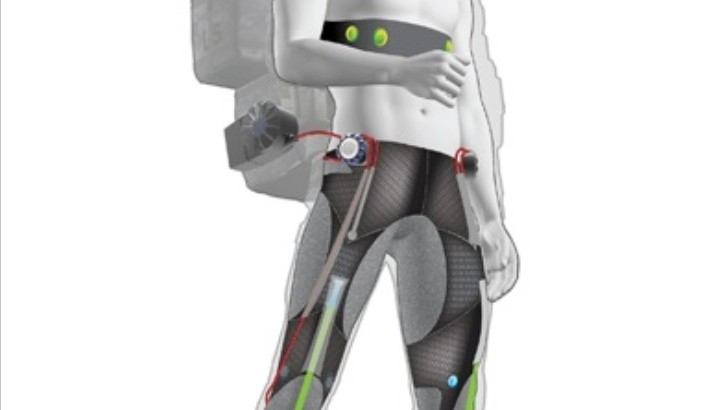You guys probably remember president Barack Obama joking about U.S. military creating an actual Iron Man suit this March. Or even better, you might’ve watched the 29-year old paraplegic man successfully kicking of the World Cup while wearing a robotic suit, in June. What if we told you Harvard just won a $2.9 million follow-on contract to make a soft exosuit that will change everything?
Called the Soft Exosuit, the device is intended to be worn comfortably under clothing and could enable soldiers to walk longer distances, keep fatigue at bay and minimize the risk of injury when carrying heavy loads. But military is not the only use of this suit, considering alternative versions of it could eventually assist those with limited mobility as well.
The Wyss Institute for Biologically Inspired Engineering at Harvard University announced this Thursday that it was awarded a first-phase $2.9 million follow-on contract from the Defense Advanced Research Projects Agency (DARPA), to further develop a biologically inspired smart suit.
Researchers claim the device is inspired by a deep understanding of the biomechanics of human walking. Soft Exosuit technology is spawning the development of entirely new forms of functional textiles, flexible powers systems, soft sensors and control strategies that enable intuitive and seamless human-machine interaction.
“While the idea of a wearable robot is not new, our design approach certainly is,” said Conor Walsh, the research team leader who is also an Assistant Professor of Mechanical and Biomedical Engineering at the Harvard School of Engineering and Applied Sciences (SEAS) and founder of the Harvard Biodesign Lab.
The lightweight Soft Exosuit is designed to overcome the challenges of traditional heavier exoskeleton systems. It is made of soft, functional textiles woven together into a piece of smart clothing that is pulled on like a pair of pants.
“Soldiers will allegedly wear it under their regular gear and through a biologically inspired design, the suit will then mimic the action of the leg muscles and tendons when a person walks. It will provide small but carefully timed assistance at the joints of the leg without restricting the wearer’s movement,” the project is explained in a press release.
Curious to see how it works? Check out the video below and prepare for the future, because it is really damn close...
The Wyss Institute for Biologically Inspired Engineering at Harvard University announced this Thursday that it was awarded a first-phase $2.9 million follow-on contract from the Defense Advanced Research Projects Agency (DARPA), to further develop a biologically inspired smart suit.
Researchers claim the device is inspired by a deep understanding of the biomechanics of human walking. Soft Exosuit technology is spawning the development of entirely new forms of functional textiles, flexible powers systems, soft sensors and control strategies that enable intuitive and seamless human-machine interaction.
“While the idea of a wearable robot is not new, our design approach certainly is,” said Conor Walsh, the research team leader who is also an Assistant Professor of Mechanical and Biomedical Engineering at the Harvard School of Engineering and Applied Sciences (SEAS) and founder of the Harvard Biodesign Lab.
The lightweight Soft Exosuit is designed to overcome the challenges of traditional heavier exoskeleton systems. It is made of soft, functional textiles woven together into a piece of smart clothing that is pulled on like a pair of pants.
“Soldiers will allegedly wear it under their regular gear and through a biologically inspired design, the suit will then mimic the action of the leg muscles and tendons when a person walks. It will provide small but carefully timed assistance at the joints of the leg without restricting the wearer’s movement,” the project is explained in a press release.
Curious to see how it works? Check out the video below and prepare for the future, because it is really damn close...

